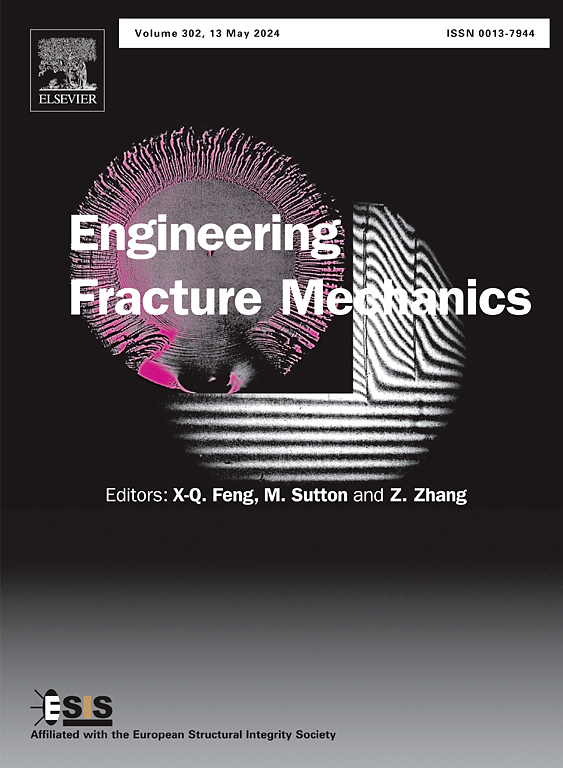An elasticity- and fracture mechanics-based model for composite timber I-joists with openings in the web
IF 5.3
2区 工程技术
Q1 MECHANICS
引用次数: 0
Abstract
Timber I-joists with plywood or oriented strand board web and solid (or engineered) wood flanges combine a lightweight design with exceptional strength and stiffness. Nevertheless, the structural behaviour of the I-joists are significantly influenced by the presence, shape, size, and location of the openings in the web, which is the focus of this study. A prescribed shear distribution along the flange-web interface and a suitable Airy stress function are adopted to satisfy the boundary conditions on the edges of the web. An analytical model for the full stress field in the web is derived and validated by 2D finite element (FE) simulations. The difference in the magnitude of the maximum stresses obtained from the analytical and FE models is less than 10 % even for the large openings (up to 90 % of the web’s depth). Different failure criteria (in the framework of direct strength and fracture mechanics) are used in conjunction with the analytical stress field to predict the failure mode and the load-carrying capacity of the I-joists. The direct strength approach grossly underestimated the peak loads; however, the failure loads obtained from the fracture mechanics-based approach showed a good correlation with the test data available in the literature.
基于弹性和断裂力学的腹板开口复合木工字梁模型
木材i型托梁与胶合板或定向刨花板腹板和实心(或工程)木法兰结合了一个轻量级的设计与特殊的强度和刚度。然而,工字梁的结构行为受到腹板开口的存在、形状、大小和位置的显著影响,这是本研究的重点。采用规定的翼缘-腹板界面剪切分布和适当的Airy应力函数来满足腹板边缘的边界条件。推导了腹板全应力场的解析模型,并通过二维有限元模拟进行了验证。从分析模型和有限元模型中得到的最大应力幅度的差异小于10%,即使对于大开口(高达腹板深度的90%)。采用不同的破坏准则(在直接强度和断裂力学的框架下)结合解析应力场来预测工字梁的破坏模式和承载能力。直接强度法严重低估了峰值荷载;然而,基于断裂力学的方法获得的破坏载荷与文献中可用的试验数据具有良好的相关性。
本文章由计算机程序翻译,如有差异,请以英文原文为准。
求助全文
约1分钟内获得全文
求助全文
来源期刊
CiteScore
8.70
自引率
13.00%
发文量
606
审稿时长
74 days
期刊介绍:
EFM covers a broad range of topics in fracture mechanics to be of interest and use to both researchers and practitioners. Contributions are welcome which address the fracture behavior of conventional engineering material systems as well as newly emerging material systems. Contributions on developments in the areas of mechanics and materials science strongly related to fracture mechanics are also welcome. Papers on fatigue are welcome if they treat the fatigue process using the methods of fracture mechanics.

 求助内容:
求助内容: 应助结果提醒方式:
应助结果提醒方式:


